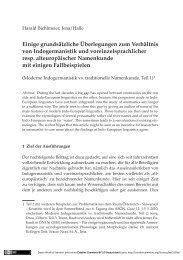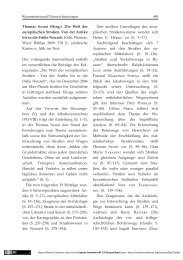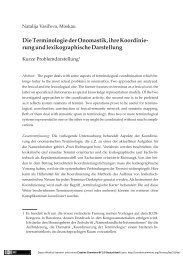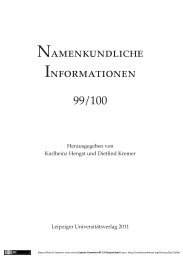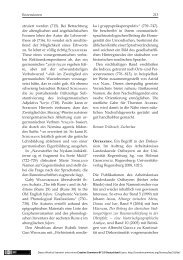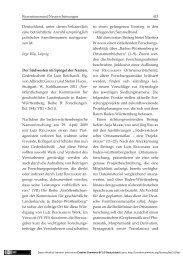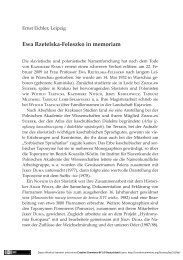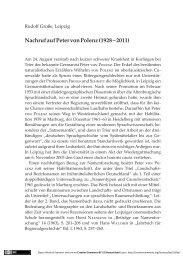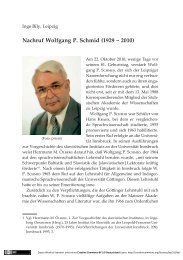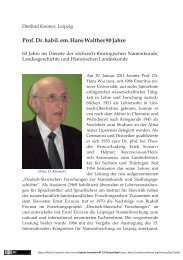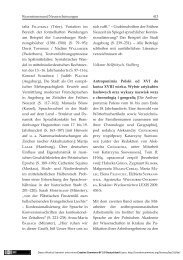Proper Names in the Light of Theoretical Onomastics
Proper Names in the Light of Theoretical Onomastics
Proper Names in the Light of Theoretical Onomastics
You also want an ePaper? Increase the reach of your titles
YUMPU automatically turns print PDFs into web optimized ePapers that Google loves.
<strong>Proper</strong> <strong>Names</strong> In <strong>the</strong> <strong>Light</strong> <strong>of</strong> <strong>Theoretical</strong> <strong>Onomastics</strong>121sphere has been develop<strong>in</strong>g s<strong>in</strong>ce 1945 4 . Its beg<strong>in</strong>n<strong>in</strong>gs are l<strong>in</strong>ked to an attemptto apply a semiotic and functional-structural approach to <strong>the</strong> research<strong>in</strong>to proper names (see V. Blanár, Osobné mená. K základom semiologickejonomastiky, 1945, manusc. <strong>Proper</strong> names. On <strong>the</strong> basis <strong>of</strong> semioticonomas tics). This deals with an attempt to comprehend <strong>the</strong> structural organisation<strong>in</strong> <strong>the</strong> system <strong>of</strong> Slovak <strong>of</strong>ficial and un<strong>of</strong>ficial (liv<strong>in</strong>g) personalnames. This structure is <strong>in</strong>vestigated as “ types <strong>of</strong> names ”. It was understoodas an “abstracted nam<strong>in</strong>g paradigm ” which is formed by onymicsigns with a certa<strong>in</strong> structure <strong>of</strong> semantic functions (cf. 113). From 1966and 1967, I have been us<strong>in</strong>g <strong>the</strong> term model (<strong>of</strong> personal names). In myfur<strong>the</strong>r research, <strong>in</strong> <strong>the</strong> description <strong>of</strong> <strong>the</strong> content aspect <strong>of</strong> personalnames, I used a method <strong>of</strong> component analysis and syn<strong>the</strong>sis and I als<strong>of</strong>ormulated <strong>the</strong> <strong>the</strong>ory and method <strong>of</strong> modell<strong>in</strong>g aspects <strong>of</strong> <strong>the</strong> contentand motivation <strong>of</strong> proper names by def<strong>in</strong><strong>in</strong>g <strong>the</strong> general nam<strong>in</strong>g pr<strong>in</strong>ciples<strong>in</strong> <strong>the</strong> proprial nom<strong>in</strong>ation <strong>of</strong> personal names (Blanár 1970/ 71; summarised<strong>in</strong> 1996; <strong>the</strong> classification <strong>of</strong> word-form<strong>in</strong>g models and types isalso outl<strong>in</strong>ed here). The substantiation and perspective <strong>of</strong> this procedurewas validated with a set <strong>of</strong> almost 60 000 liv<strong>in</strong>g personal names from centralSlovakia (Blanár / Matejčík – [Šmelík] 1978 / 83). As <strong>the</strong> research cont<strong>in</strong>ues,<strong>the</strong> set <strong>of</strong> onymic features (<strong>of</strong> prototypical character) <strong>in</strong> <strong>the</strong> designation<strong>of</strong> names has been extended. A similar <strong>the</strong>ory and method <strong>of</strong> modell<strong>in</strong>gis applied and developed by E.-M. Christoph and G. Wotjak (on<strong>the</strong> <strong>the</strong>ory <strong>of</strong> onymic features), J. Matejčík, I. Valentová (liv<strong>in</strong>g personalnames <strong>in</strong> <strong>the</strong> upper Nitra region), M. Imrichová (a subsystem <strong>of</strong> logonyms),M. Jozefovič (computer technique <strong>in</strong> <strong>the</strong> modell<strong>in</strong>g <strong>of</strong> liv<strong>in</strong>g proper names and its evaluation by graphs and maps), I. Haraj (anthroponymicsystems <strong>in</strong> <strong>the</strong> nam<strong>in</strong>g <strong>of</strong> persons <strong>in</strong> <strong>the</strong> Classical period), W. Wenzel(old personal names <strong>in</strong> Lusatian Serbia), S. Paikkala (<strong>the</strong> development<strong>of</strong> <strong>the</strong> anthroponymic system <strong>in</strong> F<strong>in</strong>land), M. Ološtiak, A. Holá, Ľ.Sičáková, M. Kazík and o<strong>the</strong>rs. The application <strong>of</strong> this methodology hasfacilitated an <strong>in</strong>sight <strong>in</strong>to a system <strong>of</strong> personal nam<strong>in</strong>g (a symbiosis <strong>of</strong>orig<strong>in</strong>al local and European <strong>of</strong>ficial nam<strong>in</strong>g) and <strong>in</strong>to differences <strong>in</strong> <strong>the</strong>use <strong>of</strong> several functional components <strong>in</strong> some African and Asian ethnicgroups <strong>in</strong> communication (Blanár 1988, 1996). A similar <strong>the</strong>oretical start-4 Pleskalová 1992, 15: “In onymy, <strong>the</strong> model classification was first applied to anthroponymyby V. Blanár.”



